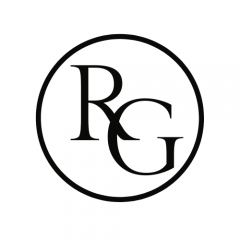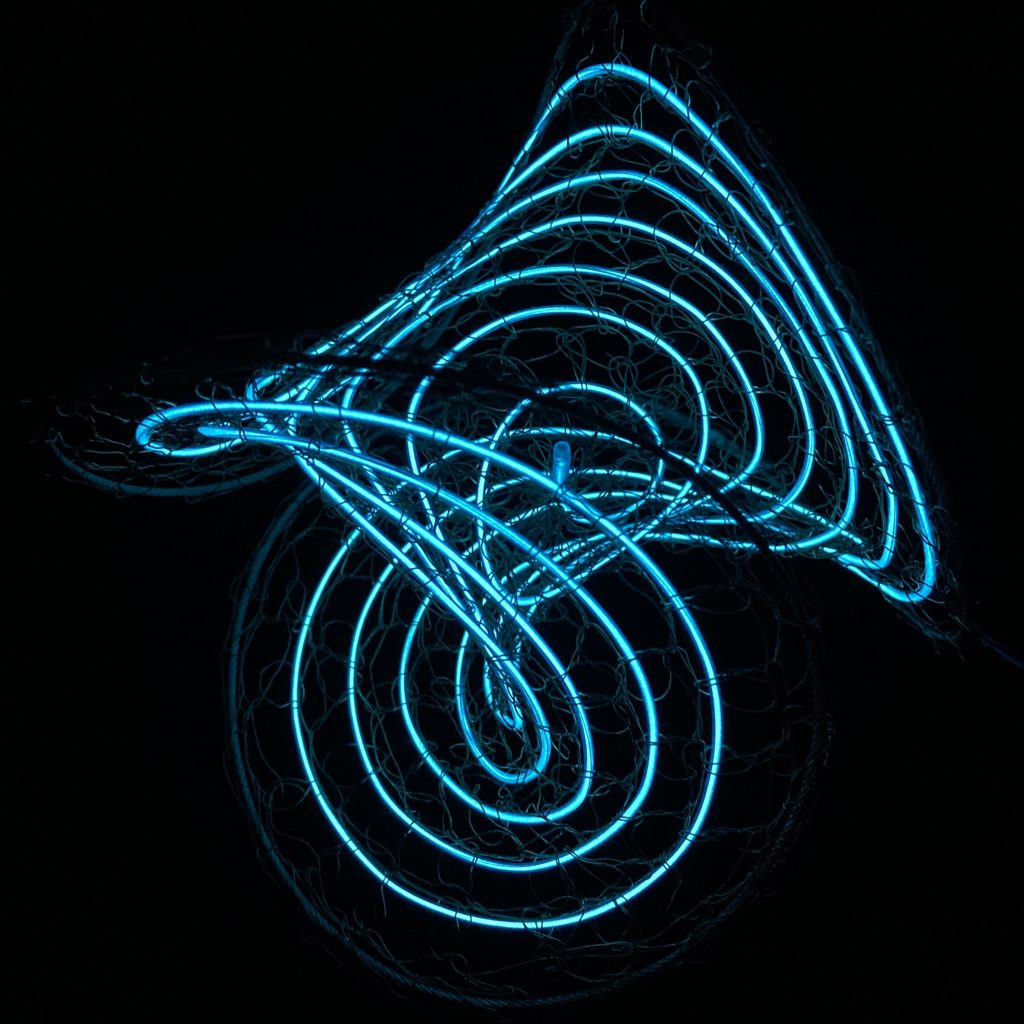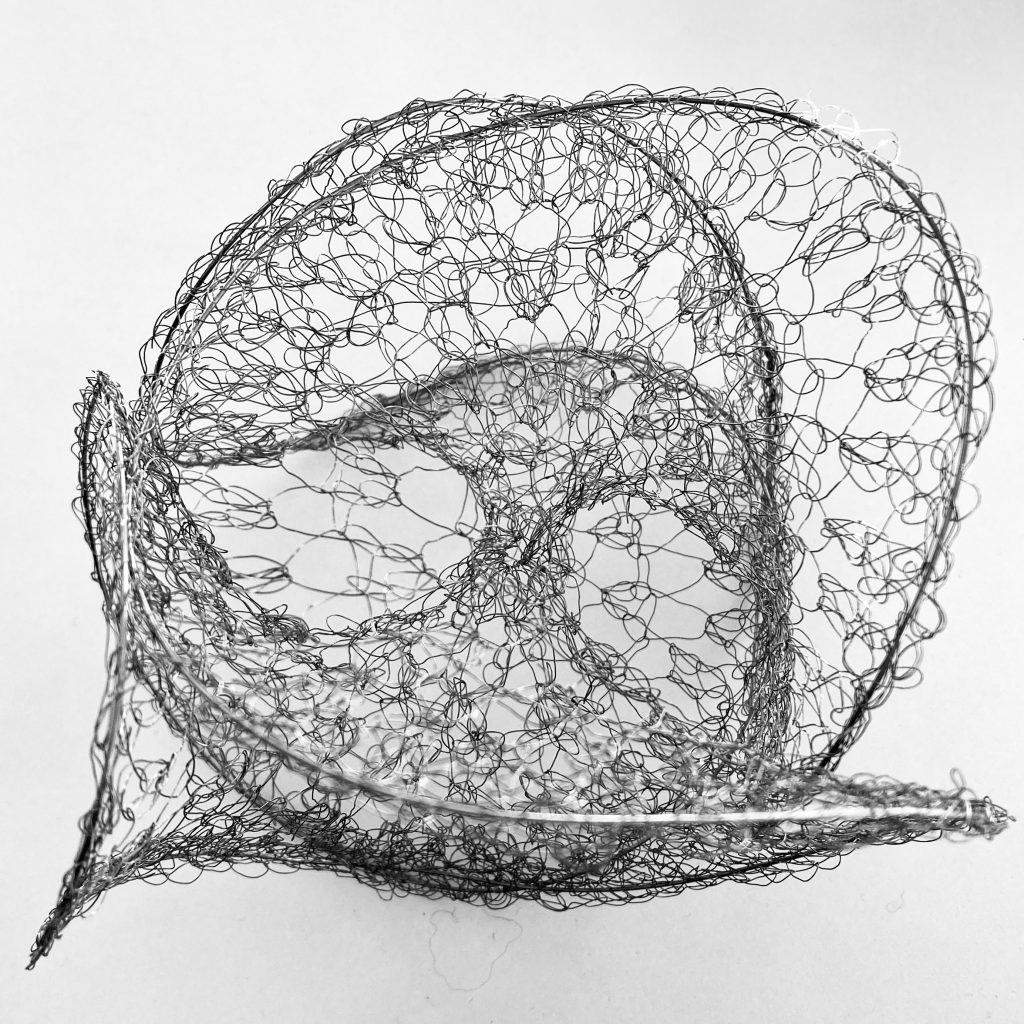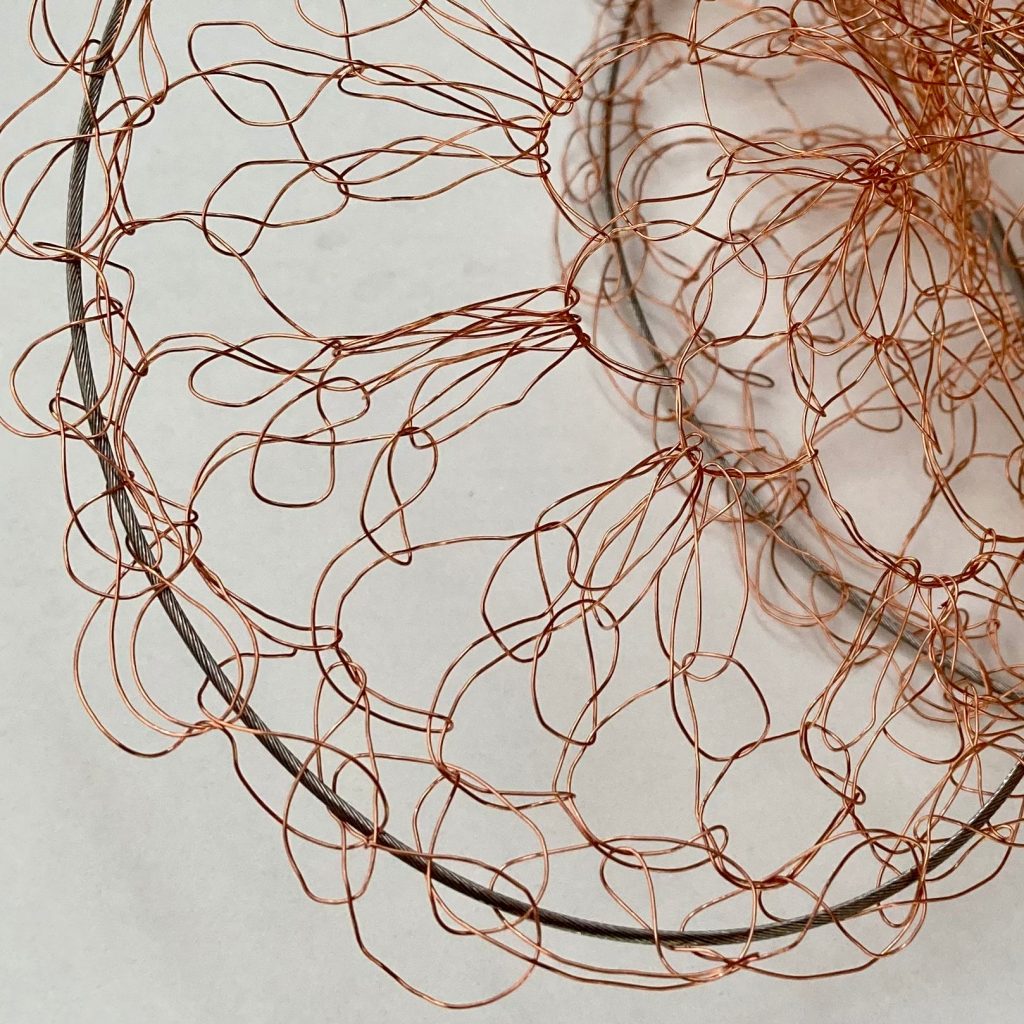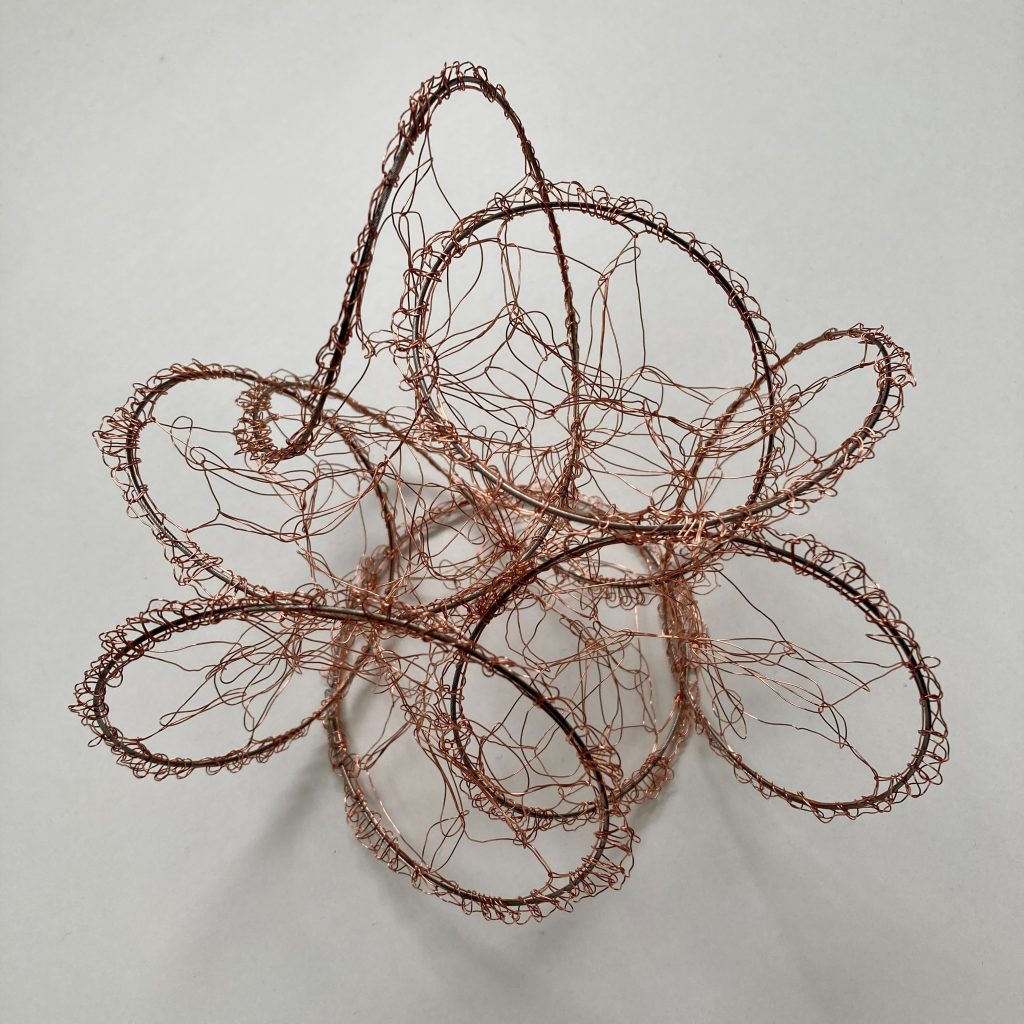Hyperbolic. Excessive, exaggerated. Non-Euclidean geometry. Negative curvature where parallel lines diverge. Hyperbolic shapes occur in nature as cells divide and grow. Hyperbolic granny squares. With discarded, donated or reworked threads, I experiment with patterns and shapes. With textiles, ceramics and printing, I explore materials, materiality and memory. The memory of textiles imprinted onto paper or cast into porcelain. Textiles are flexible, reversible and biodegradeable. When cast in porcelain they become rigid, frozen, permanent and fragile. I bring an engineering and manufacturing background to my art practice. To me it’s a process and I learn to control the inputs but cannot control the output. In the tradition of Arts and Crafts, Bauhaus and Black Mountain College, I am a maker. I value craft. My installations are interventions within the architecture of a space.
Material Memory, 2024, porcelain, timber ply offcuts, magnets
Documentation by Astrid Mulder
Curated by Rebecca George
Supported by a City of Melbourne Arts Grant
Rebecca studied Chemical Engineering and has been working in related fields since she was 18 years old. She has been crocheting since she was 6. She was never keen on following conventional crochet patterns, instead crocheting free-form to create clothing, toys or homewares. The Covid19 lockdown in Melbourne in 2020 brought an unexpected opportunity to both teach crochet online and provide time to explore crochet more creatively, using materials she already had at home.
Rebecca is inspired by the work of Daina Taimina, a Latvian mathematician who used crochet to help her and others visualise hyperic geometry. She also loves Vanessa Barrago’s tapestries, often of coral reefs, using recycled or waste materials.
Crocheting free-form allows for discovery of shapes. Mathematical shapes are interesting, from mobius strips which have a single surface and edge to hyperbolic shapes where parallel lines diverge. Many of these mathematical shapes appear in nature. All Rebecca’s experiments with shape for sculptures are made from recycled or recyclable materials.
The R > 1 series of sculptures is a visual representation of exponential growth. The R number refers to the reproduction rate of infectious diseases. Exponential growth occurs everywhere in nature: cells dividing, the shape of lettuce leaves, mice numbers or coral shapes.
Rebecca teaches crochet through SisterWorks and uses Instagram to connect and share design ideas. @yellowcamelcrochet (for crochet design and teaching) and @rebeccageorgeart (for art). She will complete a Master of Contemporary Art in 2024 at the VCA (University of Melbourne).
EXHIBITIONS AND AWARDS
2024 Working Memories, Contemporary Textile Art Exhibition, fortyfivedownstairs. Supported by a City of Melbourne Arts Grant
2024 From Where I Stand, VCA Master of Contemporary Art Year 2 Group Show
2024, 2023 & 2021 Melbourne Design Fringe at Linden New Art (highly commended for Object Design for Material Memory in 2024)
2024, 2022 Naarm Textile Collective, Assembly Point
2024 every(n)one at Five Walls
2023 Double Denim, VCA Master of Contemporary Art Year 1 Group Show
2023 Uncommon Threads at Forty Five Downstairs
2021 Knox Immerse at Stamford Park Homestead
2021 Stitching Change at Forty Five Downstairs
2021 Heide at Home Maquette Challenge winner with R=7, Delta
